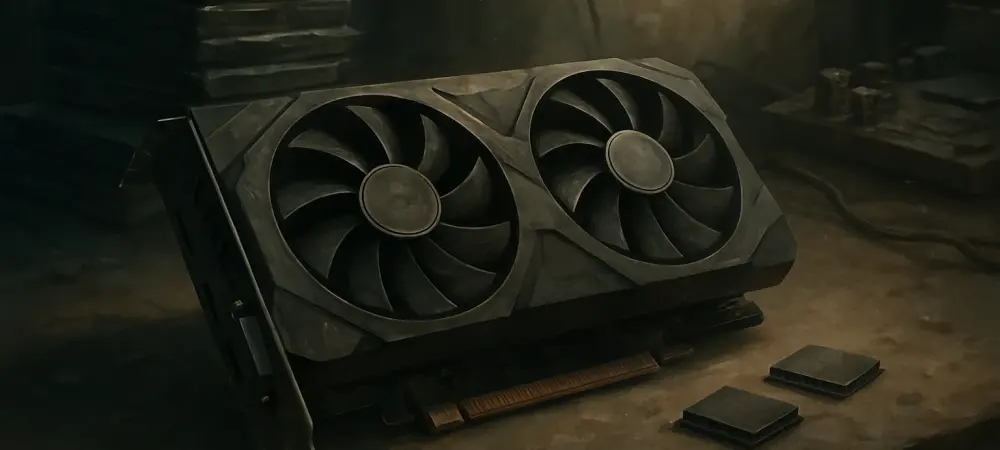Understanding the DRAM Shortage Crisis
Rising Costs and Supply Chain Disruptions
The cost of building a gaming PC has soared in recent times, with DRAM prices becoming a significant pain point for manufacturers and consumers alike. According to reports from Korean media outlets, DRAM prices have spiked dramatically over the past year, with some estimates suggesting a rise of over 30% in key memory modules. This surge is largely attributed to global supply chain disruptions, compounded by unexpected demand surges in various tech sectors, pushing memory costs to unprecedented levels.
A major driver behind this shortage is the explosive growth in data center infrastructure, which consumes vast amounts of DRAM for servers and high-performance computing. As corporations race to expand cloud computing capabilities, a substantial portion of DRAM production capacity has been diverted away from consumer markets, leaving GPU manufacturers scrambling for limited resources. This imbalance has created a bottleneck that shows no immediate signs of easing.
The ripple effect on GPU production is evident in the rising Bill of Materials (BOM) costs, with memory components now accounting for a larger share of overall expenses. Industry data indicates that BOM costs for budget GPUs have increased by as much as 20% in some cases, squeezing profit margins for manufacturers. This financial strain is particularly concerning for entry-level products, where affordability is a key selling point for consumers.
Real-World Effects on GPU Manufacturers
The impact of DRAM shortages on GPU makers is becoming increasingly apparent, with major players like AMD and NVIDIA facing tough decisions. Rumors suggest that entry-level models, such as NVIDIA’s ’60-class’ and ’50-class’ GPUs, might face discontinuation if memory costs continue to climb. Such a move would mark a significant shift in the market, as these budget-friendly options are often the gateway for new gamers entering the PC gaming space.
Supply chain reactions have been intense, with reports of ‘panic buying’ among companies desperate to secure DRAM stockpiles before prices escalate further. This behavior reflects the uncertainty surrounding future supply availability and underscores the urgency felt across the industry. Manufacturers are caught in a precarious position, balancing the need to maintain production with the reality of shrinking margins on lower-end products.
Vendors like ASUS have publicly raised concerns about the looming threat of price hikes for consumer devices. Statements from industry representatives suggest that if shortages persist, end users could see noticeable increases in GPU retail prices within the coming months. This warning highlights a broader challenge for the sector, as manufacturers grapple with how to absorb costs without alienating their customer base.
Industry Perspectives on Budget GPU Challenges
Analysts and industry insiders have weighed in on the DRAM shortage, painting a sobering picture for budget GPU production. Many experts point to a strategic prioritization of high-profit sectors like data centers, where demand for memory is both urgent and lucrative. This shift in focus means that consumer markets, often operating on thinner margins, are left with fewer resources to meet demand.
Company statements echo this sentiment, with some GPU manufacturers acknowledging the difficulty of maintaining production for lower-end models under current conditions. There is a growing consensus that allocating limited DRAM to premium products or enterprise solutions offers better financial returns, even if it risks alienating budget-conscious gamers. This pragmatic approach, while understandable from a business perspective, could reshape market dynamics in unintended ways.
The potential long-term impact on the PC gaming hardware landscape is a topic of heated discussion. As manufacturers pivot toward higher-margin sectors, there is concern that innovation and competition in the budget segment may stagnate. This trend could limit options for casual gamers and hobbyists, fundamentally altering how new players engage with PC gaming as a whole.
Future Implications for Gamers and the Market
If DRAM shortages continue unabated, the consequences for mainstream GPUs could be severe, with sustained price increases becoming the norm. Budget options, already under pressure, may become even scarcer, forcing gamers to either pay a premium for mid-range cards or settle for outdated hardware. This scenario risks creating a divide between those who can afford to keep up with rising costs and those who are priced out of the market.
The broader implications for the PC gaming industry are equally concerning, as affordability has long been a cornerstone of its accessibility. With fewer entry-level GPUs available, budget-conscious gamers might turn to alternative platforms like consoles or cloud gaming services, potentially shifting consumer behavior in significant ways. Such a trend could challenge the dominance of PC gaming in certain demographics, reshaping the competitive landscape.
On a more optimistic note, ongoing challenges might spur innovation in alternative hardware solutions, such as integrated graphics or modular designs that reduce reliance on discrete GPUs. However, negative outcomes remain a possibility, including a widening accessibility gap that could exclude new or casual gamers from participating fully in the ecosystem. Balancing these possibilities will be critical for the industry’s future stability.
Wrapping Up: The Road Ahead for Budget GPUs
Looking back, the DRAM shortage crisis revealed critical vulnerabilities in the supply chain, driving up costs and forcing manufacturers to prioritize high-return sectors over consumer markets. The looming threat to budget GPU availability underscored a tension between profitability and affordability that gripped the industry. This strategic pivot left many gamers facing higher prices and fewer options.
Moving forward, stakeholders must explore actionable solutions, such as investing in alternative memory technologies or fostering partnerships to stabilize supply chains. Gamers, too, might consider diversifying their hardware choices, exploring second-hand markets or emerging platforms to mitigate cost barriers. Staying informed about market shifts and advocating for competitive pricing will be essential steps in navigating this evolving landscape.
Ultimately, addressing these challenges requires a collective effort to ensure that PC gaming remains an inclusive space for all enthusiasts. Industry leaders must balance short-term financial goals with long-term accessibility, while consumers adapt to a changing reality. The path ahead demands vigilance and creativity to preserve the vibrant community that defines this sector.

